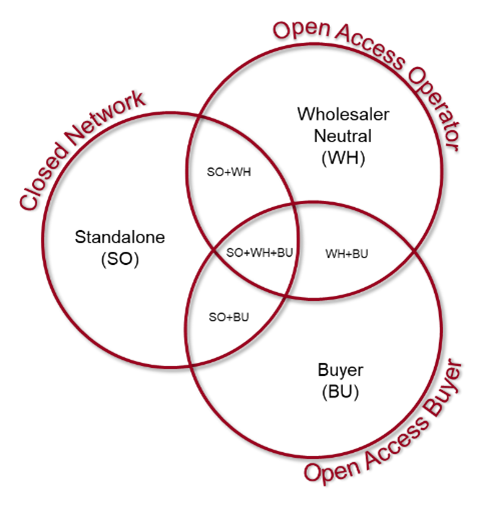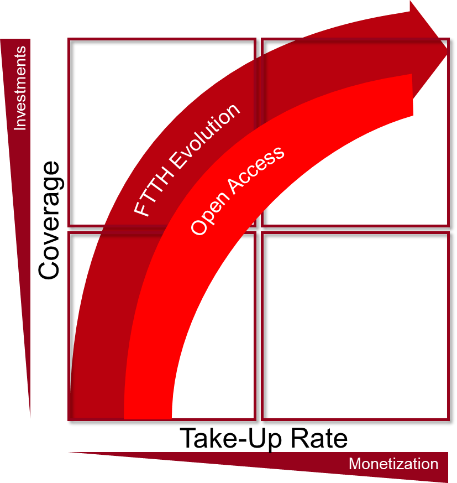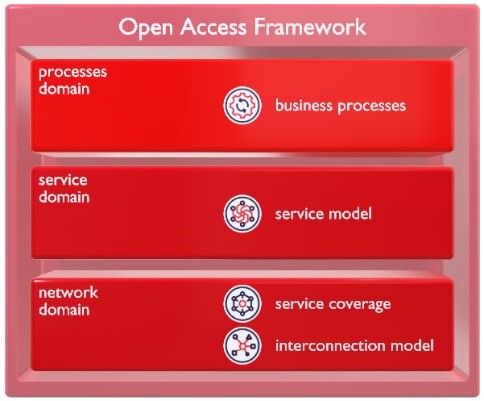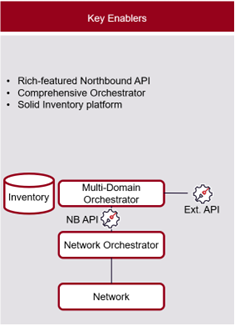Efficient full-fibre deployment hinges on scale and a customer-centric service offering relies on solid collaborations. Open Access addresses both, making it a strategic asset in the broadband ecosystem. Ciena’s Daniel Cury explains how enhancements to this model directly improve the performance of the broadband business from its very core.
Infrastructure sharing is everywhere around us to such an extent that we don’t even notice. The electrical grid is shared among electric generation companies, gas pipelines are shared among gas producers. Likewise, in broadband open access encourages the sharing of the network’s access infrastructure.
What all these shared models have in common is that they encourage competition, reduce costs and improve service quality. With open access the consumer can choose their service provider, and that choice can be made for several reasons with the ability to change providers if the consumer so desires. When it comes to building infrastructure from the ground up, open access promotes self-regulation of infrastructure expansion, because under-building and over-building are minimized by the business drivers of the various stakeholders.
At Ciena, we believe that a strategic pivot from traditional open-access models can generate profound business impact in both the immediate and long-term. The journey to a refreshed open-access approach begins now. To navigate this path effectively, it's crucial to be well-equipped with the right framework and tools. We invite you to join us in exploring the essential components in this article.
Explaining open access
To understand the concept of open access, it's essential to understand its counterpart –a closed network. This type of network is entirely owned by a single operator, spanning from the subscriber to the core. In contrast, an open access network separates the access layer from the core, enabling multiple operators to share the access network, hence the term open access. This approach is driven by several factors, with a primary one being the aim to boost efficiency through inter-operator synergies.

Figure 1 - Open Access Concept
Understanding operator roles in open access
Operators play different roles in the context of open access. Essentially, there are three operator roles: the standalone operator (who does not adopt open access), the wholesaler neutral open access operator, and the operator who buys open access. In fact, the scenario is a bit more complex, with various combinations of these three basic archetypes.

Figure 2 - Operator Roles in Open Access
Open access and FTTH development
Adoption of an open access model can differ widely by country. It is commonly tied closely to how the overall Fibre to the Home (FTTH) process is developing. Countries can be categorized into two groups based on their FTTH deployment. One group is still investing heavily to expand their network’s footprint, focusing on increasing the number of homes passed. However, the take-up rate isn't keeping pace. The second group typically has coverage exceeding 70% and a rapidly growing take-up rate, indicating higher customer adoption.

Figure 3 - FTTH Evolution and Open Access
The importance of open access
Open access is crucial for both scenarios mentioned in the chart above. It promotes faster growth in coverage by discouraging overbuilding while encouraging fibre buildout, particularly in underserved and unserved zones (often supported by public funding). Additionally, open access provides subscribers with a broader choice of service providers, leading to a greater willingness to adopt Fibre to the [endpoint] (FTTx) services.
Building blocks for successful open access deployment
A structured approach to open access can be supported by a defined framework. Open access can be broken down into three main domains: network, service, and processes. Each of these building blocks presents challenges, opportunities, and different potential strategies.

Figure 4 - Proposed Open Access Framework
The network domain: service coverage and interconnection model
The network domain comprises two functions: service coverage and the interconnection model. A smart interconnection model is fundamental for open access and requires a comprehensive portfolio of interconnection options to cater to different buyers.

Figure 5 - The network domain
The service domain: flexibility and diversity
A flexible service model is also crucial, with wholesalers offering a diverse portfolio that includes flexible data rate tiers, a wide range of compatible CPEs, and off-the-shelf functionalities like Multicast and Bitstream L2/L3 support.
 Figure 6 - The service domain
Figure 6 - The service domain
The processes domain: business processes and digital platforms
In the business processes function, the current ecosystem contains ad-hoc or standard APIs that can be complex for most players to implement. API versioning adds another layer of complexity. Digital platforms play a crucial role here, serving as mediators or facilitators between players at various stages of electronic interface development.
 Figure 7 - The business processes domain
Figure 7 - The business processes domain
The new ecosystem: open source projects and cloud platforms
A new ecosystem is emerging to encourage the developer community to join through Open Source Projects, providing developer-friendly APIs for wider adoption. As more developers join, these APIs become more popular, leading to cloud providers recognizing their value and implementing them natively on their cloud platform service portfolios.
 Figure 8 - A new business processes ecosystem
Figure 8 - A new business processes ecosystem
Key enablers from the seller and buyer's perspective
From the seller and buyer's perspective, key enablers are closely related to three basic components: a feature-rich northbound API for proper automation between the OSS and BSS layers, a comprehensive multi-domain orchestrator to coordinate business processes and secure integration with external platforms, and a robust inventory platform for secure, efficient, and comprehensive integration.

Figure 9 - New business processes model enablers
Key takeaways for a disruptive open access approach
A holistic approach to open access is crucial. An open access architecture can be a competitive differentiator. It is essential to align business with open access strategies. Every function is an opportunity to stand out in the market. Accurate ROI analysis is important for translating an open access initiative into measurable business results.
Understanding and implementing open access can significantly boost network efficiency while promoting faster coverage growth. By understanding the key elements, roles, and strategies involved in open access, operators can better navigate this complex landscape and make informed decisions that align with their business strategies.






